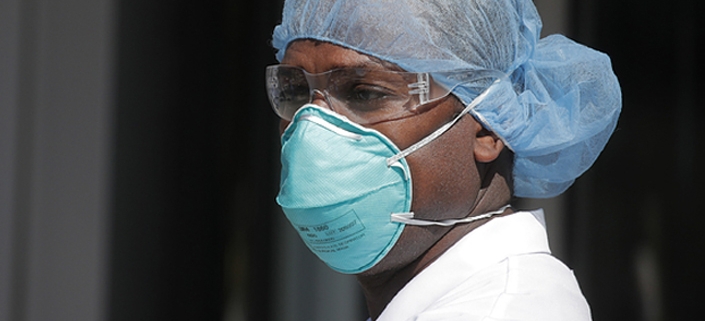KN95 Mask vs N95 Mask
Filtering respirator face piece masks are subject to various regulatory standards and compliance guidelines from around the world. These guidelines and standards specify the required physical properties, performance characteristics and functionality necessary for achieving a particular standard within a particular country. During emergency situations such as epidemics and pandemics, health authorities may authorize the use of certain foreign standards of face piece respirators such as N95, KN95, or FFP2 equivalent. This article will seek to identify and describe some of the most commonly available respirator standards around the world as well as provide a summary of the current regulatory framework under the FDA in the United States with respect to the 2019 novel coronavirus and associated COVID-19 pandemic. This article was last updated on May 7th, 2020.
The most common face-piece respirator standards from across the globe are as follows:
- N95/N99 – United States NIOSH
- FFP2/FFP3 – Europe CE EN 149:2001+A1:2009
- KN95 – China GB2626-2006
- Special 1st – Korea KMOEL – 2017-64
- P95 – Mexico NOM-116-2009
- P2/P3 – Australia AS/NZS 1716:2012
- DS/DL2/DL3 – Japan JMHLW-200
N95 Respirator Masks
In the United States, the most commonly available and well-known respirators are the N95 facepiece respirators which filter up to 95% of particles and create an air tight seal around the face. These type of respirator masks are not specifically regulated by the FDA, rather they are regulated by the CDC and NIOSH. The FDA may regulate an N95 mask if the manufacturer chooses to market the mask for a medical purpose, and in such case it would need an FDA clearance. However, on March 2, 2020, in response to the COVID-19 pandemic, the FDA released guidance that certain NIOSH approved respirators not currently regulated by the FDA are cleared to be used in a healthcare setting by health care personnel during the emergency coronavirus outbreak (Source FDA https://www.fda.gov/news-events/press-announcements/coronavirus-covid-19-update-fda-and-cdc-take-action-increase-access-respirators-including-n95s).
FFP2 Respirator Masks
FFP2 respirator masks are certified by the European Union to meet the standards of CE regulation EN 149:2001+A1:2009 for filtering up to 94% of particles. In response to the coronavirus (COVID-19) outbreak, on March 28th, 2020, the FDA announced that certified European CE EN-149 FFP2 respirator masks are cleared for emergency use under certain conditions when there is a shortage of NIOSH approved N95 respirators: (Source FDA https://www.fda.
KN95 Respirator Masks
KN95 masks are regulated by the Chinese government under regulation GB2626-2006 and are rated to filter 95% of particles. In April of 2020, in order to help expand the availability of general use face masks for the general public and particulate filtering facepiece respirators for healthcare professionals during the COVID-19 pandemic, the FDA issued guidance authorizing the use of KN95 masks as suitable NIOSH alternatives under certain emergency circumstances (Source:FDA https://www.fda.gov/medical-devices/personal-protective-equipment-infection-control/faqs-shortages-surgical-masks-and-gowns and FDA https://www.fda.gov/media/136449/download).
On May 7th of 2020, the FDA updated the April guidance and issued further guidance limiting the use of certain KN95 masks as suitable NIOSH alternatives in a healthcare setting (Source: FDA https://www.fda.gov/media/136664/download).
N95 Masks vs KN95 Masks vs FFP2
N95 and KN95 masks both filter up to 95% of particles and create an air tight seal around the face. Under the current US regulatory framework mentioned above, as of April 8th 2020, the FDA has authorized the emergency use of KN95 masks and FFP2 masks where there is a shortage of NIOSH approved N95 masks (Source:FDA https://www.fda.gov/medical-devices/personal-protective-equipment-infection-control/faqs-shortages-surgical-masks-and-gowns and FDA https://www.fda.gov/media/136449/download).
On May 7th of 2020, the FDA updated the April guidance and issued further guidance limiting the use of certain KN95 masks as suitable NIOSH alternatives in a healthcare setting (Source: FDA https://www.fda.gov/media/136664/download).
Other differences between N95 masks vs KN95 masks are that KN95 masks often use the earloop method of wearing the respirator whereas the N95 masks use a two head-strap attachments, one that goes around the back of the head under the ears and another that goes on the top over the crown of the head above the ears. It really comes down to personal preference in terms of which one is more comfortable for the wearer as well as the level of safety and protection one feels is necessary given the particular activity being carried out.
Personally, I find that the KN95 is easier and faster to put on and take off whereas the N95 seems to fit much more snug and with a tighter and firmer fit. Further, I find that the N95 masks, due to the tightness of the seal, are slightly more uncomfortable to wear, but give a feeling of greater protection. Another factor to consider is that NIOSH approved N95 masks tend to be a little pricier than the KN95/FFP2 variants.


